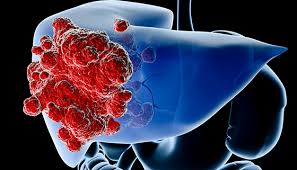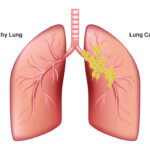Malignant neoplasm of the liver, commonly referred to as liver cancer, is a severe condition characterized by uncontrolled cell growth in the liver. The most common type is hepatocellular carcinoma (HCC), although other forms like cholangiocarcinoma and angiosarcoma also exist. Liver cancer is one of the leading causes of cancer-related deaths worldwide, often linked to chronic liver diseases such as hepatitis B, hepatitis C, and cirrhosis.

Types of Malignant Liver Neoplasms
Hepatocellular Carcinoma (HCC)
HCC is the most prevalent type of liver cancer, originating from hepatocytes, the primary liver cells. It is strongly associated with chronic liver disease and cirrhosis.
Cholangiocarcinoma
Also known as bile duct cancer, cholangiocarcinoma develops in the bile ducts inside or outside the liver. It is less common but highly aggressive.
Angiosarcoma and Hemangiosarcoma
These rare liver cancers originate from blood vessels in the liver and spread rapidly, making early detection crucial.
Hepatoblastoma
A rare liver cancer primarily affecting children, usually under the age of three. It has a high survival rate if diagnosed early.
Causes and Risk Factors
- Chronic Hepatitis B and C Infections: Long-term viral infections can lead to cirrhosis and increase cancer risk.
- Cirrhosis: Liver scarring from alcohol abuse, nonalcoholic fatty liver disease (NAFLD), or infections predisposes individuals to cancer.
- Aflatoxin Exposure: A carcinogenic substance found in contaminated food products.
- Excessive Alcohol Consumption: Long-term alcohol use contributes to liver damage and cancer.
- Obesity and Diabetes: Metabolic disorders increase the likelihood of developing liver cancer.
Symptoms of Malignant Liver Neoplasms
Liver cancer symptoms often appear in advanced stages, making early detection challenging. Common symptoms include:
- Unexplained weight loss
- Persistent fatigue
- Jaundice (yellowing of the skin and eyes)
- Abdominal pain or swelling
- Nausea and vomiting
- Dark urine and pale stools
Diagnosis and Staging
Imaging Tests
- Ultrasound: First-line imaging test to detect liver tumors.
- CT Scan and MRI: Provide detailed images of liver masses and their extent.
- PET Scan: Detects cancer spread beyond the liver.
Blood Tests
- Alpha-fetoprotein (AFP) Test: Elevated AFP levels can indicate liver cancer.
- Liver Function Tests: Assess overall liver health.
Biopsy
A liver biopsy involves extracting a tissue sample to confirm cancer and its type.
Staging of Liver Cancer
Liver cancer is staged based on tumor size, spread to lymph nodes, and metastasis:
Treatment Options
Surgery
- Liver Resection (Partial Hepatectomy): Suitable for small, localized tumors in healthy liver tissue.
- Liver Transplantation: Recommended for patients with cirrhosis and small tumors, offering a potential cure.
Targeted Therapy
Drugs like sorafenib and lenvatinib target cancer cell growth and angiogenesis.
Immunotherapy
Checkpoint inhibitors such as pembrolizumab enhance the immune system’s response to liver cancer cells.
Chemotherapy
Used in advanced cases but has limited effectiveness in liver cancer.
Radiation Therapy
Stereotactic body radiation therapy (SBRT) helps shrink tumors when surgery is not an option.
Ablative Therapies
- Radiofrequency Ablation (RFA): Uses heat to destroy cancer cells.
- Transarterial Chemoembolization (TACE): Delivers chemotherapy directly to the tumor via blood vessels.
Prognosis and Survival Rates
Survival rates depend on cancer stage, treatment response, and liver function. Early-stage liver cancer has a five-year survival rate of 30-50%, while advanced cases have a much lower prognosis.
Prevention Strategies
- Get vaccinated against hepatitis B
- Maintain a healthy diet and weight
- Limit alcohol intake
- Avoid exposure to aflatoxins and toxins
- Regular screenings for high-risk individuals
Malignant neoplasm of the liver is a life-threatening condition requiring prompt diagnosis and treatment. Advances in targeted therapy, immunotherapy, and surgical techniques continue to improve outcomes. Early detection remains the key to better survival rates, making regular screenings crucial for high-risk individuals.

